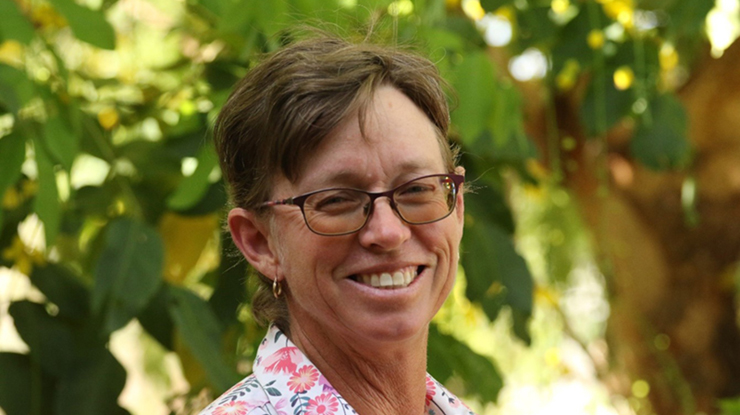 Wendy Sheehan shares insights into the running of the generational property, Trinidad Station.
Wendy Sheehan shares insights into the running of the generational property, Trinidad Station.
How a Breeding EDGE workshop led to a new way of thinking at Trinidad Station
A lot has changed since Wendy Sheehan’s great-grandfather bought Trinidad Station in the early 1900s. The Quilpie property has grown, and the family has had to develop a more diverse business model to manage risk.
After spending her childhood growing up on Trinidad Station, Wendy returned in 2000 with her husband Peter in tow. Working for her mother for some time, they later went into a partnership running the property together.
Over the years, the location of the 100,000ha property has forced their hand over some management decisions.
“We run sheep and cattle, although we’ve had to cut down on our sheep numbers, because the pressure from wild dogs was getting too much,” Wendy said.
“We’d love to be able to run more, especially so we don’t have all our eggs in one basket and can manage our risk, but there was a fairly rapid increase in sheep losses from wild dogs in the early 2000s which influenced our business model.
“We bait, trap and run guardian alpacas with our sheep. Despite the Wild Dog Barrier Fence tracking across our property, there are certainly some dogs still on the inside.”
Manage what you can
Despite some decisions being out of their hands, Wendy and her family are working to make improvements where they can.
Utilising MLA’s EDGEnetwork training has been a tried and trusted method for the Sheehans to implement new strategies on-farm.
“My husband went to a Nutrition EDGE workshop and found it really valuable,” Wendy said.
“We’re always looking for more information about how things work and the best way to make informed decisions.”
After attending a recent Breeding EDGE workshop, Wendy came home with a series of changes to implement at Trinidad Station.
Given the station’s size, the workshop guided Wendy towards effective ways of staying across the condition of their herd.
“We had one set of scales here at the house which we use for weaners. We recently put another set of scales over at the cattle yards where our main herd runs, 30km or so from our house,” Wendy said.
“Previously, we weighed our steers as calves, and didn’t weigh any females until they were ready to leave the property.
“Going forward, we’ll put our weaner heifers across the scales so we can use the daily weight gain as a tool when we’re deciding what we want to cull and what we want to keep as breeders.
“We’ve also started keeping a record of wet and dry cattle, so we can monitor their fertility performance over several years and hopefully make some improvements with that data.”
The business has also changed the management of their bulls since the workshop, including increasing the bull vet checks to every two years, rather than every three or four.
“To concentrate more on bull breeding preparedness, we’re reducing our bull joining percentage from 3.5% to 2.5%,” Wendy said.
“We’re also reducing our bull joining time from year-round to five months. Next year, we plan to reduce joining time to four months, with three months being ideal for us but a few years away. This way we can reduce the need for pregnancy testing out of calving season too.”
Sharing station life on social media
When Wendy isn’t running the property alongside her family, she has taken her love for photography and found a way to share it with the world without leaving the farm.
“I take photos on the property and share them on social media,” Wendy said.
“I try to give people information about what’s happening in the photo, because sometimes you can see a really cool photo from the land, but people often don’t understand what is going on.”
Wendy’s Instagram has amassed a following of over 21,000 people, who watch as she shares goat updates, ear-marking explanations, and just what the bush lifestyle looks like.
“It’s a way to open a communication bridge between people who live in the city or on the coast and don’t get the opportunity to come out and see where we live and what we do.”



